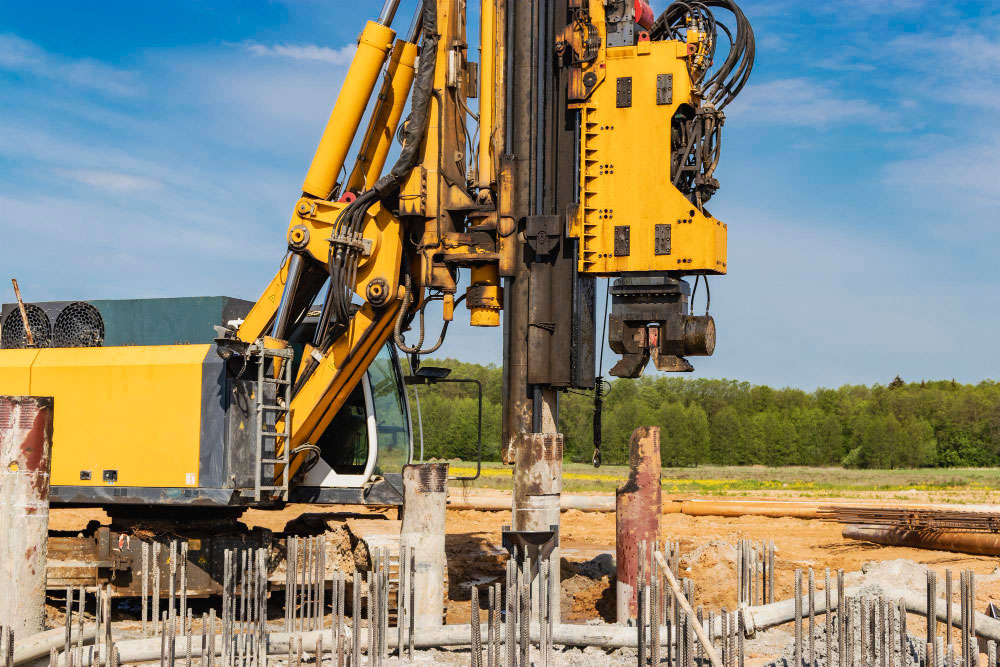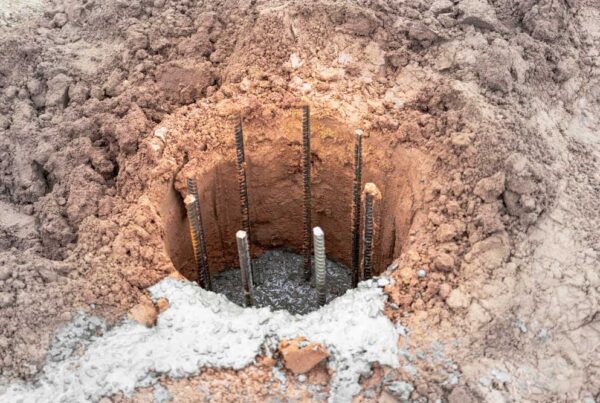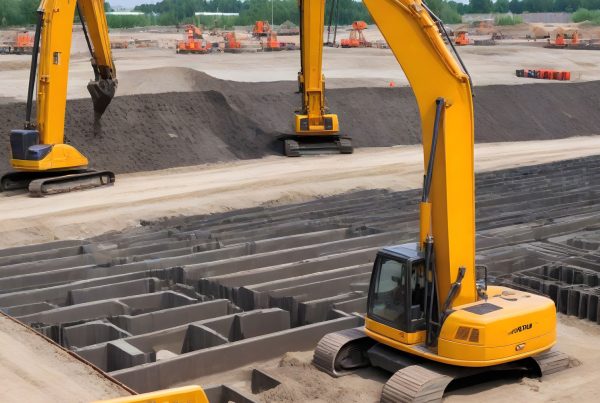Bored piles, also known as drilled shafts, are a vital component in modern construction, providing strong and reliable foundations for a wide range of structures. These piles are installed by drilling a hole into the ground and filling it with reinforced concrete, making them suitable for projects requiring high load-bearing capacity and stability. In regions like Congo, where diverse soil conditions and rapid urbanization pose unique challenges, bored piles offer an effective solution for creating durable foundations. This article explores the role of bored piles in contemporary construction and their significance in tackling modern infrastructure demands.
1. Applications of Bored Piles
Bored piles are versatile and can be used in various construction projects, including:
- High-rise buildings
- Bridges and overpasses
- Industrial facilities
- Marine structures
- Retaining walls
In Congo, bored piles are increasingly being utilized in large-scale infrastructure projects, such as urban developments and transportation networks, where strong and deep foundations are required to support heavy loads and withstand environmental factors.
2. Advantages of Bored Piles
Bored piles offer numerous advantages, making them an essential choice for modern construction:
2.1 High Load-Bearing Capacity
Bored piles can support significant vertical and horizontal loads, making them ideal for heavy structures like skyscrapers and bridges. Their ability to transfer loads to deeper, stable soil layers ensures the long-term stability of the structure.
2.2 Minimal Environmental Impact
Unlike driven piles, which generate high noise and vibration, bored piles have a lower environmental impact. This makes them suitable for use in urban areas or sensitive locations, such as heritage sites and densely populated neighborhoods in Congo.
2.3 Adaptability to Soil Conditions
Bored piles can be customized to suit various soil types, including soft clay, loose sand, and dense rock. This adaptability ensures their effectiveness in regions with diverse geotechnical conditions, such as Congo.
3. Construction Process
The construction of bored piles involves several steps to ensure structural integrity and performance:
- Site Investigation: Geotechnical surveys are conducted to analyze soil properties and determine the appropriate pile design.
- Drilling: Specialized equipment is used to drill a hole to the required depth, ensuring minimal disturbance to the surrounding soil.
- Reinforcement: A steel cage is placed inside the drilled hole to enhance the pile’s strength and resistance to bending forces.
- Concrete Placement: The hole is filled with high-quality concrete, ensuring a solid and durable foundation.
4. Challenges and Solutions
While bored piles are highly effective, certain challenges may arise during their installation:
4.1 Groundwater Management
In areas with high groundwater levels, such as parts of Congo, managing water intrusion during drilling can be challenging. Using casing or bentonite slurry helps stabilize the borehole and prevent collapse.
4.2 Equipment and Expertise
The installation of bored piles requires specialized equipment and skilled professionals. Investing in training and advanced machinery ensures efficient and accurate execution.
5. Contribution to Infrastructure Development in Congo
Bored piles play a significant role in supporting Congo’s growing infrastructure needs. From urban skyscrapers to rural bridges, these piles provide the stability and strength needed to build resilient structures. Their adaptability to local soil conditions and minimal environmental impact make them an ideal choice for sustainable development in the region.
Conclusion
Bored piles are a cornerstone of modern construction, offering unparalleled stability, adaptability, and environmental compatibility. In regions like Congo, where the demand for robust infrastructure is rising, bored piles have become an indispensable tool for tackling diverse construction challenges. By leveraging their advantages and addressing installation challenges, construction professionals can ensure the success of projects and contribute to sustainable development in the built environment.






